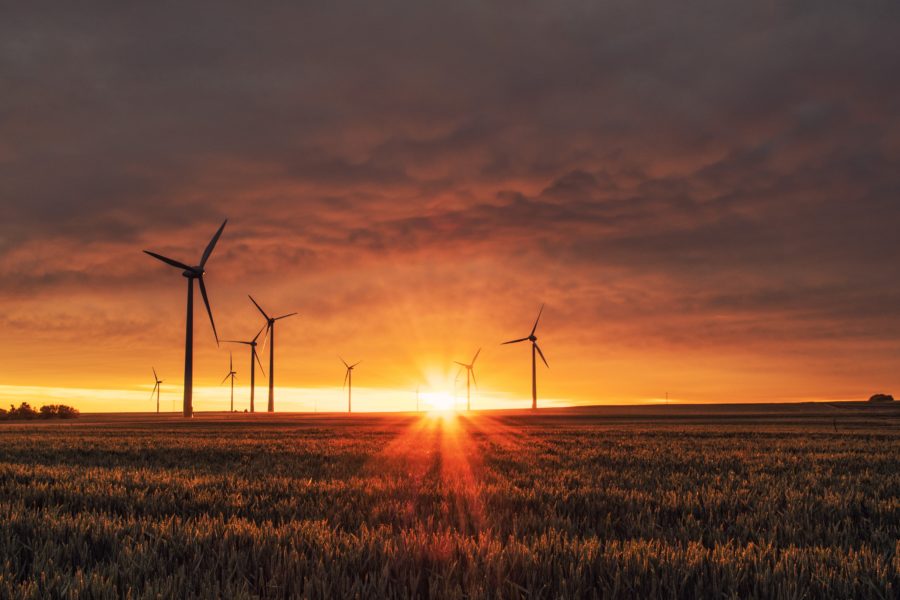PhD, Science and Innovation Policy Advisor, Europe Head of Clean Growth & Climate Change
17th August 2020 Stockholm, Sweden
The European Energy Transition 
Over the last year, the UK government’s international Science and Innovation Network has been collaborating with UK Research & Innovation and the Energy Systems Catapult (ESC) to produce a market study to identify some of the key European countries that are seeing significant changes in their domestic energy system as a result of the energy transition and the most exciting markets for smart systems and flexibility business models. The work carried out by ESC, identified six priority countries from an assessment of 31 countries across Europe, which are either making considerable inroads or have favourable conditions for the scale-up in the use of smart and flexible energy innovation and solution, as Europe continues its journey to meet it climate commitments.
The importance of this kind of work for the next generation of energy innovation cannot be sufficiently underscored, as smart systems and flexibility technologies and solutions are critical instruments in the suite needed to reach net zero. As already highlighted in more details in my earlier articles here and here, as the share of intermittent renewable energy generation increases, storage and grid balancing will become more widespread and effective in order to meet climate targets, whilst ensuring security of supply. As interconnections between regions are only likely to take us part of the distance, the importance of demand-side flexibility will only continue to grow. This market study will provide an important guidance for UK innovators, start-ups and SMEs on opportunities abroad for the uptake of their technologies and services, as few businesses (aside from larger corporates) have the financial availability to commission such an undertaking.
The country selection was based on assessments against various important parameters such as the policy and regulatory landscape, ease of business, market size and competitiveness, as well as flexibility profile. Aside from the insight on the new energy markets that are emerging in these countries (including the openness of these electricity markets and barriers), the report also provides an interesting snap-shot glimpse of how the energy transition is transforming the energy systems across Europe in different ways.
Much is already known about the rise of affordable solar PV that was conceived out of accelerated German market demand as the country began to phase-out nuclear – coupled with the fast-pace economy-of-scale that was delivered on the supply side from China. Or more recently, how the price of offshore wind has similarly collapsed by 75% in only a few years in the UK with the support of government feed-in-tariffs, and is likely to fall even further as wind turbine height and swept area increase.
However, the report provides a valuable insight how the energy transition has already begun to unfold in a significant way in countries such as Denmark, Germany and the Netherlands, and emerging in places like Portugal and Spain.
More broadly in Europe, the energy transition is currently being driven by a number of factors including a) adoption of smart metering, b) acceleration of EV purchases, c) price reduction of lithium-ion batteries and other storage solution, d) policies to aid decarbonisation of heating and electrification of the sector and e) improvements to new buildings and retrofit standards that will potentially mandate low-carbon technology – albeit progressive climate targets providing the ultimate backdrop for many of these developments. Moreover, EU directives such as the “Clean Energy Package for all European” will play a pivotal role in bringing down barriers to participation in electricity markets.
As home to the “Energiewende”, Germany should not come as a surprise as ranking amongst the top-tier markets for smart energy and flexibility technologies/solutions. The country has seen a remarkable rise in the share of renewables in recent year reaching 51.9% of electricity generation in the first quarter of 2020 (mostly via onshore wind), as the transition continues to be propelled by the phase out of both nuclear and coal. Yet, with bulk of its wind generation in the Northern part of the country whilst demand-centres located in the South, insufficient transmission capacity has resulted in severe congestions and a strong need for the balancing between supply and demand and flexibility at a local level. Indeed, Germany is already one of the largest markets for home energy management systems, but the country has seen significant inroads made in solar PV systems, electric heating, smart homes and battery storage units. With the Dutch government setting out to completely abolish both coal power generation and the Groningen gas field by 2030, renewable capacity is expected to rise significantly in the Netherlands in coming years. Flexibility markets have begun to evolve but already the country has made great strides in EV infrastructure investments (and has recently secured Europe’s largest EV charging contract) and is expected to drive serious efforts on the electrification of heating.
While flexibility market development remains at an early stage in the Iberian Peninsula, both Spain and Portugal are experiencing a solar boom with a huge potential for wind and storage. Furthermore, Spain’s ambitious plans for renewable electricity generation with a target of a 74% share by 2030 provides the backdrop for its plans to double wind capacity and see fourfold increase in solar capacity. In Portugal, which has seen a substantial influx of new solar projects, the regulator has allowed a joint solar-storage project to participate in capacity auctions and will arrange its first ever dedicated auction this year to manage a substantial surplus in renewable energy where batteries and power-to-gas options are being considered. In Denmark, the energy system has successfully integrated substantial amounts of renewable electricity, with 67% of final electricity consumption met by renewables in 2018. Certainly, a considerable degree of interconnections with neighbouring countries has helped Denmark go a significant distance to mitigate the intermittency issues that come with the territory of such a high renewable share. However, flexible demand options will also play a large role as the country pursues a 100% renewable electricity and a ban on petrol and diesel cars by 2030, but also well positioned to capitalise on its district heating plants to participate in flexibility markets..
As previously discussed in earlier blog posts here and here, energy system flexibility is at the nexus of the energy transition, and the current growth in the interest (and need) in flexibility and flexibility markets is all but certain to continue as the EU member states begin to implement the progressive regulatory changes of the Clean Growth package. As for the UK, the country was an early-mover in recognising the need for flexibility and has been at the forefront of driving actions and removing barriers to help pave the way for the market design that enables flexibility to be valued and commercialised. At present, the UK has 13.5GW of battery projects under development at the planning stage, whilst UK-based energy-tech start-up Piclo is providing a platform for UKPN’s 170MW flexibility competition.
Since the global energy transition is a prerequisite to meet our climate targets and safeguard our children’s future, the flexibility market will play a sizable role in the green growth and recovery. In this context, the UK has an excellent opportunity to emerge as a market leader in this space and ESC market study sheds light on some of the technological, political and market drivers that underlie the transformation of the energy system in Europe. Yet, numerous policy and regulatory barriers continue to stifle the pace of the energy transition via deployment of flexibility innovations and services. Because of this, the Foreign Office’s international Science and Innovation Network has been working closely with the UK Department of Business, Energy and Industrial Strategy and ESC to build an international coalition to address these challenges around the flexibility markets through the International Energy Agency’s International Smart Grid Action Network (ISGAN). This work will continue through the year with the support of the FCO’s Prosperity Fund to help realise the clean energy system and compatible market design that will take us a step closer towards our climate targets.
Related posts:
17th August 2020
Tokyo, Japan
William Adams: the first Briton in Japan 
by Paul Madden
British Ambassador to Japan
The post The European Energy Transition appeared first on BIDD.









